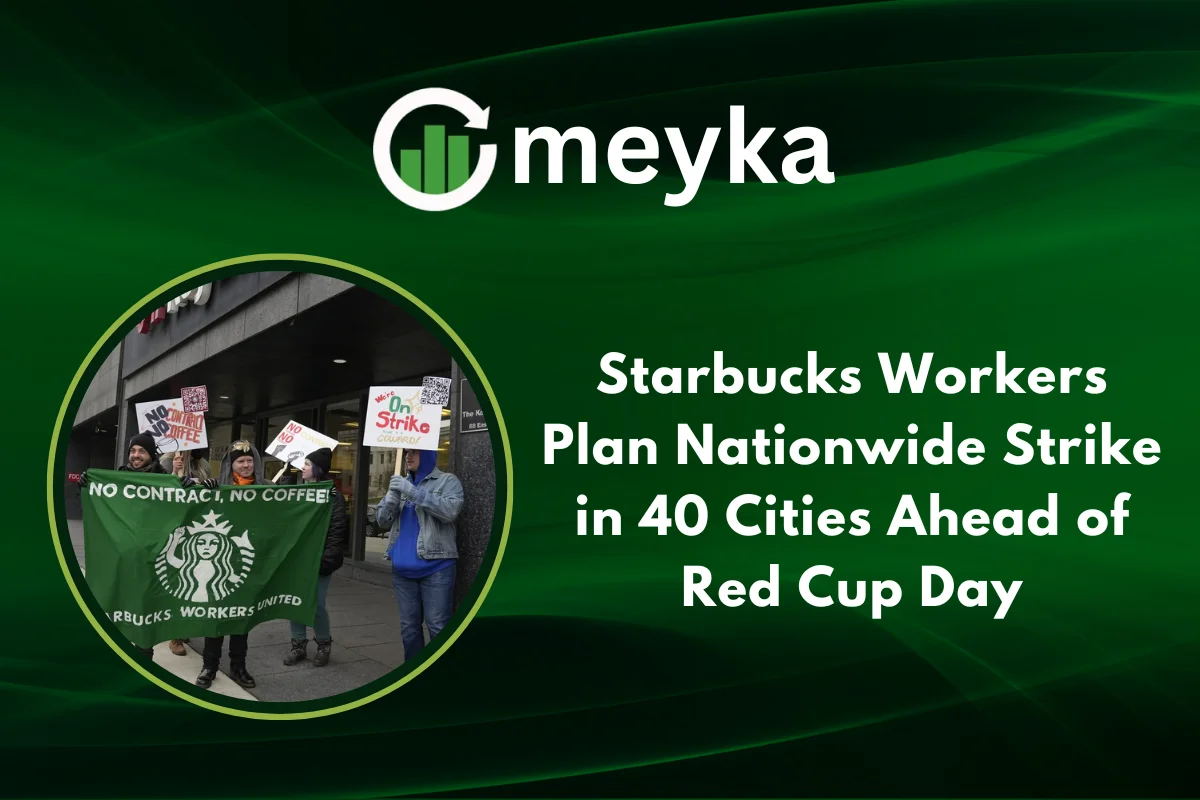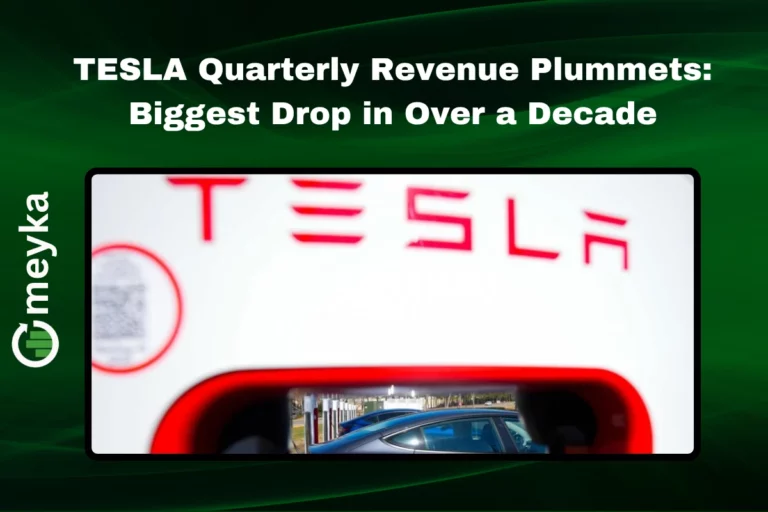Starbucks Workers Plan Nationwide Strike in 40 Cities Ahead of Red Cup Day
The coffee chain Starbucks finds itself at a critical crossroads. Workers are preparing a major strike in approximately 40 U.S. cities, timed to coincide with the company’s annual “Red Cup Day” promotion. The move highlights deep tensions between the company and unionised employees, and the consequences may ripple across its business, its stock and what investors look for in stock research in the current stock market environment.
What’s happening at Starbucks?
Baristas and other staff represented by Starbucks Workers United say they will walk off the job at more than 65 stores across about 40 cities. The strike is scheduled to begin on or just ahead of Red Cup Day, one of Starbucks’ busiest seasonal events when the brand releases its red holiday‑themed cups and typically sees a surge in customer visits.
Workers are demanding stronger pay, more reliable hours, better staffing and a formal contract. The union claims negotiations with Starbucks have stalled and unfair labour practice charges remain unresolved. Starbucks, for its part, argues it offers strong compensation and that the union represents only a small fraction of its stores.
Why this matters for Starbucks, the brand and the stock market
For everyday customers, a strike at Starbucks might mean longer wait times, limited menu items or disruptions at specific locations. For investors and those doing stock research, the implications are broader:
- Brand and service risk: Starbucks depends heavily on customer experience. Interruptions or negative press could weaken loyalty and sales.
- Cost pressure: If Starbucks grants higher wages or better benefits, margins may come under pressure — something analysts will watch closely.
- Stock market signal: Labour unrest hints at deeper structural issues, such as staffing, employee retention or operations, which can affect growth expectations. In an environment where investors also study high‑growth areas like AI stocks or technology companies, legacy brands like Starbucks cannot be ignored.
- Valuation and risk: For Starbucks’ shares, the market may reassess whether its turnaround plans are achievable when key staff issues exist. This may affect its inclusion in investment portfolios and how the stock stacks up against other retail or service‑sector companies.
The worker demands and the union stance
The union says workers at Starbucks are fighting for three main things:
- Fair pay increases above current levels, to reflect the cost of living and seasonal workload.
- Better scheduling and staffing, so workers have consistent hours and access to benefits.
- Resolution of unfair labour practice (ULP) claims, including alleged retaliation and failure to bargain in good faith.
Workers view the timing of the strike, ahead of Red Cup Day, as a strategic move to maximise pressure. “The union says this is part of ‘No Contract, No Coffee’ campaign,” one report noted.
Starbucks’ response and the business context
Starbucks acknowledges the union claims but emphasises that:
- It offers competitive pay and benefits (representing it as “top tier” in retail).
- The unionised workforce is still a small percentage of its total U.S. employee base.
- Most stores remain open and unaffected by union actions so far.
From a business perspective, Starbucks is also undergoing a turnaround plan under CEO Brian Niccol, who took the helm to drive growth, streamline operations and boost profitability. Labour disruption at this stage adds a notable complication to those efforts.
What could happen next — and what to watch
For Starbucks, the strike is a warning sign. Here’s what to monitor:
- Scale of disruption: If the strike spreads to more stores or causes store closures, the revenue hit may be meaningful.
- Contract outcome: If Starbucks signs a new agreement with improved terms, the cost base may rise; investors need to assess the margin impact.
- Customer impact & brand sentiment: Negative customer reactions, social media coverage or boycott campaigns could hurt traffic during a key holiday period.
- Comparative sector risk: Retail and service companies are under labour pressure across the board. For stock research, Starbucks becomes a proxy for how legacy retail brands handle rising pay and unionisation risk, compared with more growth‑oriented companies like AI stocks.
- Long‑term structural effects: If Starbucks fails to resolve staffing or labour issues, scaling and service quality could suffer. That may make the stock less appealing relative to companies with lean labour models or heavy automation.
Retail watchers and investors alike should see this strike as more than a labour story; it’s a signal about operational health, cost structure and competitive positioning.
How this affects customers and investors
For customers:
- Select Starbucks stores may face service delays or temporary closures.
- Holiday promotions (like Red Cup Day) could be less reliable.
- Local store experience may vary depending on how labour tensions play out.
For investors & stock researchers:
- Evaluate Starbucks’ upcoming quarterly earnings for signs of margin stress or weaker traffic.
- Compare Starbucks to other service‑based retailers and see how labour risk is managed across the sector.
- Consider how the broader investment environment (including growth themes like AI stocks) might treat companies with elevated wage or staffing risk.
- Watch for any announcements from Starbucks about higher wage commitments, staffing changes, or union agreements; these will affect cost modelling and valuation.
The bigger picture — labour risk in the stock market
Starbucks is not alone. Many companies are facing pressure from unionisation, wage inflation, staffing shortages and operational changes. In the era of stock market focus on innovation and growth (e.g., AI stocks), legacy brands must manage cost and employee issues with equal care. When labour issues become publicly visible, they can shift investor sentiment rapidly.
This is especially relevant when a company like Starbucks is in a transitional phase, trying to modernise, attract younger customers, improve technology and maintain service consistency. The labour story may feed into how investors view its capacity for growth and whether it can compete with leaner or more tech‑enabled rivals.
Conclusion
The planned nationwide strike by Starbucks workers ahead of Red Cup Day is a major event with implications for both consumers and investors. It highlights labour tensions, brand risk and the challenge of balancing cost, service and growth.
For those doing stock research or watching the stock market, Starbucks is more than a coffee chain; it’s a litmus test for how established retailers handle rising labour pressure while staying competitive in a fast‑moving world. How Starbucks responds, and how the market reacts, will tell us a lot about labour dynamics, cost risk and operating strategy in 2026 and beyond.
FAQs
Starbucks workers are striking because contract negotiations have reportedly stalled, and they want better pay, consistent hours and resolution of unfair labour practices. The timing ahead of Red Cup Day is strategic, as it is one of Starbucks’ highest‑volume customer days.
The strike could impact Starbucks’ holiday traffic and customer experience at key stores. For investors, it raises questions about cost pressure, margin risk and brand strength, which could affect the company’s valuation and competitiveness in the stock market.
Investors should look for updates on the strike’s size and duration, any contract terms agreed, margin and traffic metrics in upcoming earnings, and how labour and staffing cost trends compare to peer companies. Also, compare how Starbucks manages this risk relative to growth‑based sectors like AI stocks and tech firms.
Disclaimer:
The content shared by Meyka AI PTY LTD is solely for research and informational purposes. Meyka is not a financial advisory service, and the information provided should not be considered investment or trading advice.






